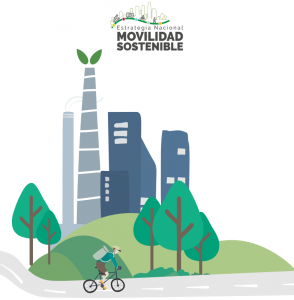
The National Sustainable Transport Strategy (Estrategia Nacional de Movilidad Sostenible, ENMS) is Chile’s long-term national transport development strategy. The strategy is jointly developed by the Chilean ministries of housing and urban planning, public works, social development and households, energy, environment, and regional development, in order to achieve Chile’s goal of zero net carbon emissions by 2050. The research and formulation of this strategy was carried out jointly with the German Agency for International Cooperation (GIZ) with the support of the European Union.
From 1990 to 2018, Chile’s annual carbon emissions related to transportation and transportation increased by more than 7%, of which carbon emissions from urban transportation accounted for more than 50% of the country’s total emissions. Therefore, effective improvement measures are urgently needed. Chile hopes to use this strategy to successfully reduce carbon emissions and serve as the main axis of Chile’s transportation policy. It is expected that various agencies and local governments will formulate more specific implementation plans and measures in 2022.
The ENMS strategic plan formulated a total of 7 policy objectives, including
(1) territorial planning and transportation (regional and urban planning with public transportation as the main axis, promoting inter-regional transportation, and developing urban sustainable logistics and transportation);
(2) environment and transportation (reducing the purchase and use of high-polluting vehicles, strengthening inspections of high-polluting vehicles, encouraging the purchase of low-polluting private transportation, and the use of low-emission vehicles in public and freight fleets);
(3) transportation efficiency (reducing non-essential movement, re-planning road space, Improve the quality of public transport services, reduce the use of inefficient means of transport);
(4) Safe and active transportation (promote pedestrian and bicycle-related infrastructure and safety, promote the use of public transport and bicycles, and encourage active mobility) ;
(5) Transportation inclusiveness (implementation of accessible infrastructure and public space, accessible public transportation services);
(6) Transportation and public participation (transportation policy formulation is incorporated into the public participation mechanism, and a transportation issue reflection platform is established);
(7) Transparency of traffic information (use big data and digital technology for traffic management, develop an integrated traffic information platform, provide traffic information needed by citizens, and more.)
Related News: http://mtt.gob.cl/archivos/30875
Supplementary documents